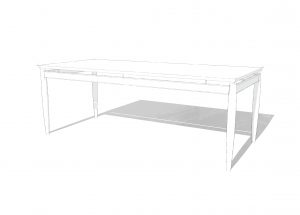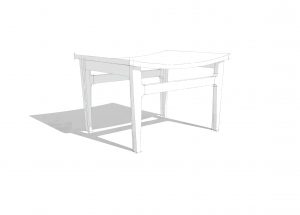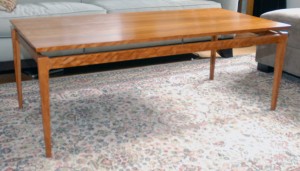We may receive a commission when you use our affiliate links. However, this does not impact our recommendations.
I’ve enjoyed Chuck’s and Bob’s posts on design and recently had cause to think about them while working on a coffee table for an upcoming book on Mid-Century Modern furniture. At the risk of over-simplifying, these posts suggest an axis for approaching furniture design: on the one end, evaluate a class of furniture and synthesize elements to produce a design; on the other end, reproduce a piece to really understand how it was designed and built.
I had to take a middle a middle ground with my table build. I wanted to reproduce a coffee table by Danish designer Finn Juhl, but the leg featured turned legs. Latheless, I designed by substitution, searching for alternate legs that would work with the design. It didn’t take me long to find an element I could appropriate from another piece by Juhl. The legs of an ottoman would mesh with the table design with minimal alteration.
Solution identified, I created a template and continued with construction. I was pretty pleased with the result (not always a given with my projects). It’s as close as I could come to the original while accommodating my tool constraints.
There’s a risk to substitution—you can end up with a piece of frankenfurniture that seems more like a collection of elements or parts than an organic whole—but it can be a useful technique if you’re faced with design or technical limitations.
If you’re interested learning more about design or Arts & Crafts furniture, you might enjoy my web seminar on “Unknown Arts & Crafts—Design Sources” (a.k.a. The Best A&C Designs You’ve Never Heard Of). We took a look at some of the key elements that distinguish important, but lesser-known, makers of the period. The download of that Popular Woodworking University seminar will be available soon.
— Michael Crow
Michael is the author of “Building Classic Arts & Crafts Furniture: Shop Drawings for 33 Traditional Charles Limbert Projects.” His next book, Mid-Century Modern, is due out in spring of 2015.
Here are some supplies and tools we find essential in our everyday work around the shop. We may receive a commission from sales referred by our links; however, we have carefully selected these products for their usefulness and quality.












